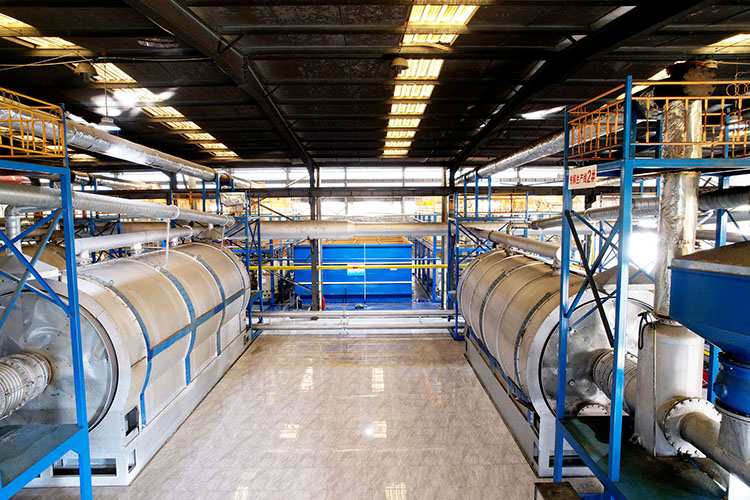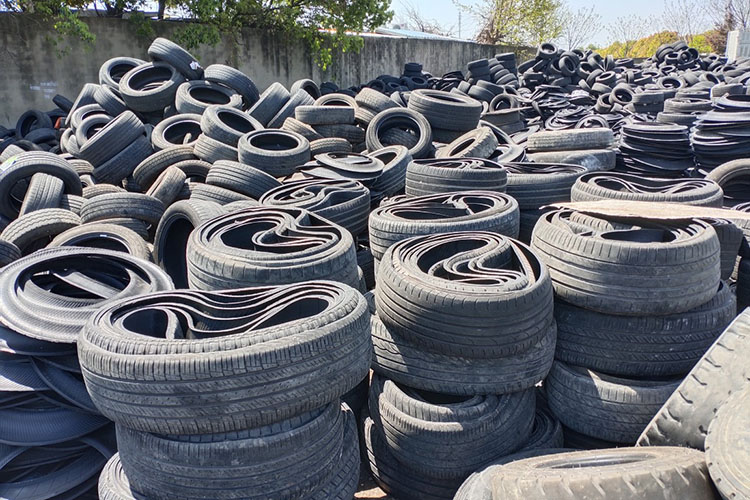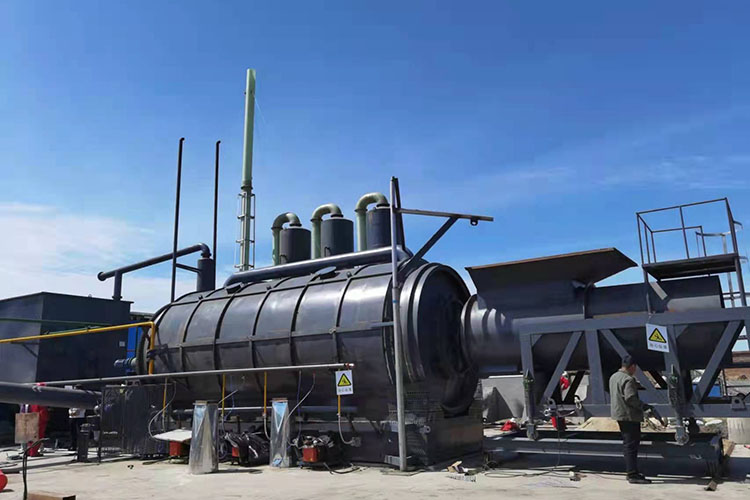The disposal of waste tires has always been an important issue in environmental protection and resource recycling. With the accelerated development of global industrialization and urbanization, the amount of waste tires is rapidly increasing. How to effectively dispose of these wastes has become an urgent problem that governments and enterprises around the world need to solve. Traditional methods for treating waste tires, such as landfilling and incineration, not only suffer from environmental pollution and resource waste, but also struggle to meet the growing demand for treatment. Therefore, continuous waste tire refining equipment, as an emerging technological solution, has received increasing attention and application.

The process of continuous waste tire refining equipment mainly includes several main steps: pre-treatment of waste tires, pyrolysis reaction, condensation separation, and product processing. The equipment uses high-temperature pyrolysis technology to convert solid waste tires into liquid fuel oil, carbon black, and other useful chemical products, achieving effective resource recycling and reuse.
Before sending waste tires to refining equipment, pre-treatment is required to remove metal components and other impurities from the tires. These metal components include steel wires and steel strips, which may damage equipment or interfere with the pyrolysis process. Therefore, before entering the refining equipment, the waste tires are crushed and screened to ensure smooth progress in subsequent pyrolysis reactions.
After pre-treatment, the waste tires are transported to the reactor (or furnace) of the refining equipment. In the reactor, waste tires undergo pyrolysis and cracking in a high-temperature environment. This process is usually carried out under anaerobic or low oxygen conditions to prevent tire material from burning but instead undergo chemical cracking. At high temperatures, organic matter in waste tires begins to decompose, producing gaseous and liquid hydrocarbons.
The gaseous products generated by the pyrolysis reaction enter the condensation system and undergo cooling and condensation processes to convert the gaseous products into liquid products. The condensation system effectively separates useful liquid products such as fuel oil by controlling temperature and pressure, and collects them into corresponding storage containers. Meanwhile, other by-products such as carbon black and water vapor are also generated during the condensation process.

The liquid product separated from the condensation system is mainly fuel oil, which can be further used as fuel for industrial or motor vehicles. In addition, carbon black, as another valuable byproduct, is often collected and processed. Carbon black can be used in the rubber industry, asphalt production, and other chemical applications, with broad market demand and application prospects.
The continuous waste tire refining equipment can not only effectively solve the environmental problems of waste tire processing, but also achieve sustainable economic development. By recycling energy and chemical raw materials from waste tires, these devices not only reduce the amount of waste, but also create new sources of income for businesses. Selling fuel oil and other chemical products not only helps with capital recovery, but also promotes the recycling of waste resources, providing new growth points for socio-economic development.
From an environmental perspective, the continuous waste tire refining equipment significantly reduces the environmental pollution and resource waste caused by the incineration and landfill of waste tires. By converting waste tires into useful energy products, these devices effectively reduce reliance on traditional petroleum resources and decrease carbon emissions and the release of other pollutants, contributing to environmental protection.

Overall, the continuous waste tire refining equipment represents an effective and reasonable solution aimed at achieving resource recycling and sustainable environmental development. With the continuous advancement of technology and the accumulation of application experience, it is believed that these devices will play an increasingly important role in the management of waste resources in the future, contributing greater strength to the construction of a resource-saving and environmentally friendly society.
Yongle Environmental Protection is mainly engaged in the research and development, production and sales of complete sets of technical equipment for organic solid waste disposal and comprehensive utilization. Production and manufacturing, domestic waste treatment equipment, tire pyrolysis equipment, medical waste disposal equipment, hazardous waste disposal equipment, and achieve efficient and comprehensive utilization of resources through independently developed low-temperature anaerobic pyrolysis equipment technology solutions.
Tags:Processing technology of continuous waste tire refining equipment,continuous waste tire refining equipment,YONGLE GROUP
 Latest news
Latest news


























